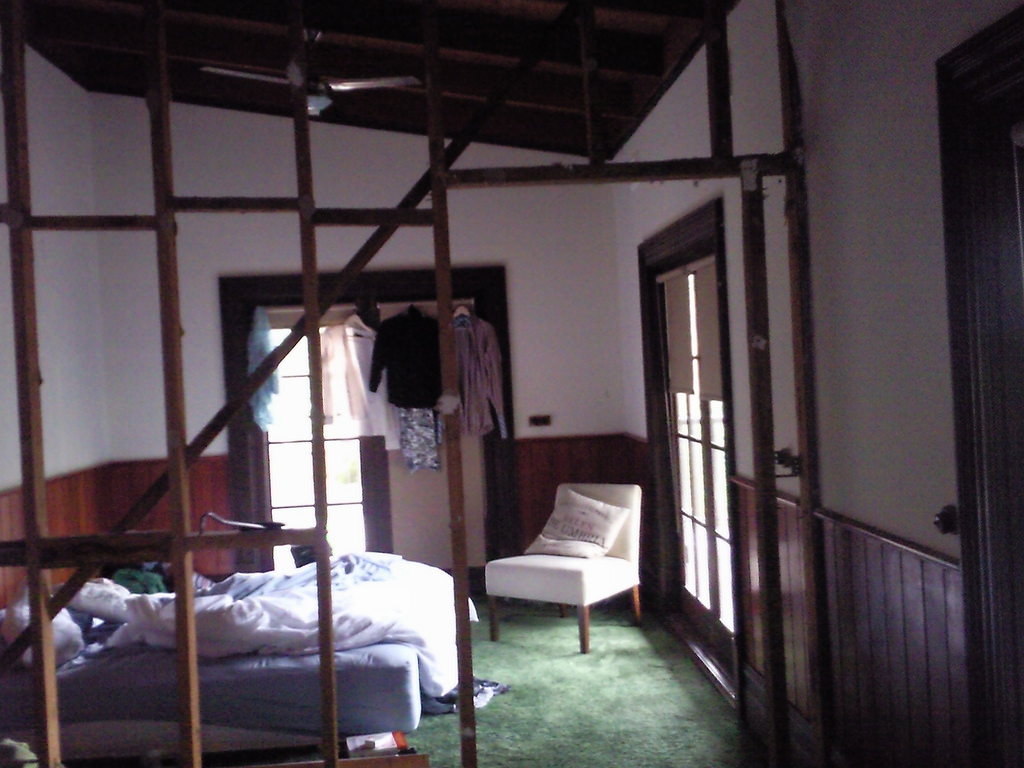Mistake number one is so common and I myself have been guilty of it. We want to save a penny here or there and in the end, we should have gone with what we had originally planned to buy.
Buying Cheap Materials
Don't Sweat It host Steve Watson says, “One of the biggest mistakes that people make when it comes to home renovation (is that) they try to be cheap when they buy materials. The bottom line is, you're going to get what you pay for.”
Carpenter Jimmy Little adds his two cents: “If you're going to do it, do it. If you can't afford to do it, wait.”
Inaccurate Measurements
Nancy Soriano, former editor in chief of Country Living magazine says, “I can't emphasize enough how an inch or even sometimes a half an inch can make a difference. And if your dimensions are off and it's not equal and symmetrical, you're not going to get the full impact and effect that you want. If you're not sure about how to measure or you can't follow the directions, don't hesitate at all to call somebody. Ask them to come over and take the measurement for you.”
Skipping the Prep Work
“Do it the right way, right away,” says Carey. “You shouldn't avoid your prep work. You want to take the time to do it right and right from the beginning.”
Contractor Jim Collins says, “It's a horrible, tedious process, and nobody likes it, but it saves so much time later on down the way. And that's what you're trying to do: save yourself money and time.”
Gutting Everything
“Make sure you have a well-set plan before you start your renovations, because you don't want to go in there and just clear everything out, when you might be able to work around some areas,” warns Carey Evans of Don't Sweat It.
“I see this time and time again where people just start, and they think they're going to pull a piece of wallpaper off, and by the time the process is over, they've completely gotten themselves into a deep, dark hole that's very difficult to get out of,” adds Eric Stromer of Over Your Head.
Using the Wrong Tools
“There are really three problems with using the wrong tool: You can wreck the tool, you can wreck the project you're working on and you can wreck yourself,” notes Spike Carelsen, former executive editor of Family Handyman.
Ignoring Lighting
Hammer Heads carpenter Carmen De La Paz says, “Another mistake that homeowners will often make is not taking into consideration the lighting in their home. The lighting in your home can completely change the colors, the feeling, the ambiance.”
Designed to Sell's Lisa LaPorta adds, “There are really three main types of lighting: general lighting, task lighting and drama or accent lighting. You need a combination to have a really good end design.”
Going Too Trendy
“People often make the mistake of wanting to be too hip and trendy in their new home by picking the latest, hottest, coolest things,” says Carmen. “What they don't take into consideration is that trendy means that it's short term.”
“You want something that's going to stand the test of time, and you want something that's going to last for years and years,” says Jim.
Building Small Doorways
“Make sure you're looking at the entire floor plan of your home when you're planning your doorways. Look for, and make sure that every room has multiple exits. Or, if those doorways are in high-traffic areas, make sure they're wide enough to let multiple people pass through,” Carey says.
Failure to Anticipate Chaos
“I think it's really important to anticipate the time and the pacing of your renovation,” notes Nancy. “You probably want to do that up front, get it over with and then you can slowly start to piece your life and your home back together.”
Using the Wrong Paint Type
“People often make the mistake of picking the wrong paint for whatever particular project they may be working on,” says Carmen. “You don't realize that there is paint for just about every surface.”
“Flat is for your ceilings and sometimes for your walls,” adds carpenter Jeff Devlin of Spice Up My Kitchen. “Whereas your semigloss would be for trim in a bathroom or in a dining room. The glossy will give it a more upscale look.”
Not Doing Your Homework
“You have to know what you're getting into,” Jim says. “Even if you're not doing the work yourself, know what to look for, what your contractor is doing. That way you can keep a close eye on the project and know when something's getting out of hand.”
“I think it's really important to do at least some preliminary work. You want to be able to have enough information to know what questions to ask,” Nancy says.
Have you ever had a project go totally off the rails? Let us know what happened in the comments below!
Source: HGTV

Ifu have plaster walls or cieling an dont know how to fix it,drywall over that$#%&!@*lol